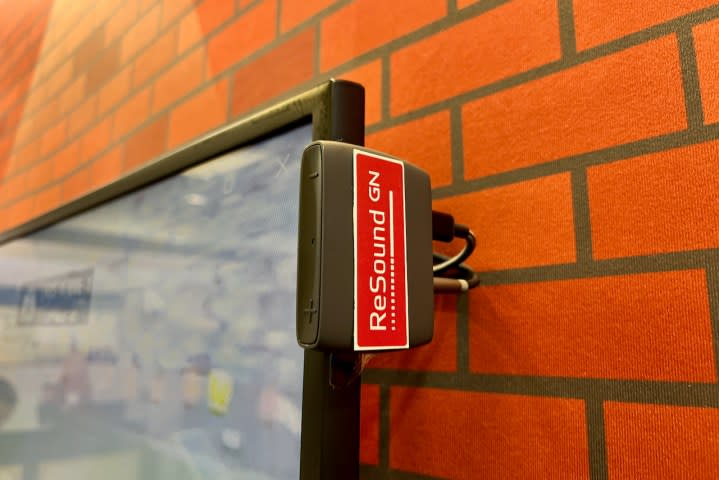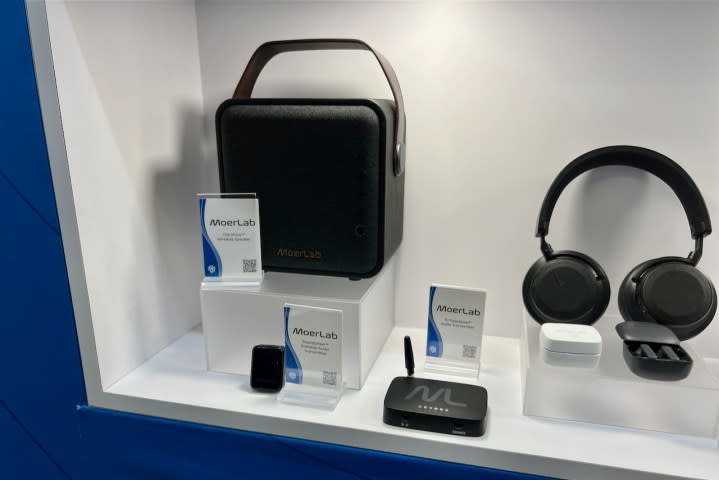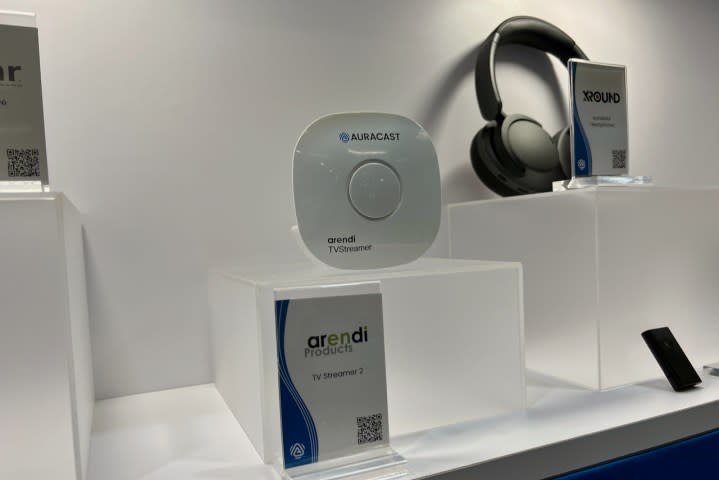My flight home from CES 2024 proved that the world needs Auracast
- Oops!Something went wrong.Please try again later.
This article contains affiliate links; if you click such a link and make a purchase, Digital Trends and Yahoo Inc. may earn a commission.
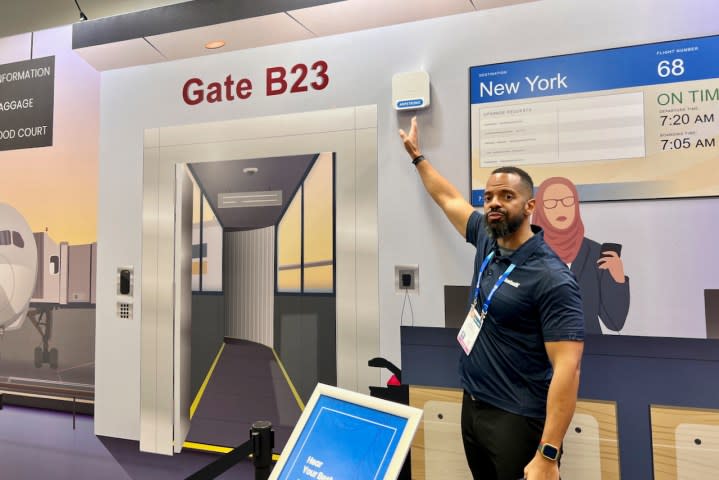
I was sitting at my gate in Las Vegas’ Harry Reid airport waiting to board my red-eye home to Toronto after four days at CES 2024 when my brain’s last functioning cell was jolted back to life by a mishmash of airport intercom announcements. One was a general reminder to not leave my luggage unattended, and the other, from my gate, rattled off a list of passenger names for passport verification. All very important. I think.
The crisscrossing audio mess was confusing to decipher, but the real-life use case provided me with the inspiration I needed to write this post about a new Bluetooth tech I demoed at the show called Auracast, which promises to make audio in public spaces like airports, bars, movie theaters, and auditoriums better and more personalized.
The demo, put on by the Bluetooth Special Interest Group, the folks in charge of establishing Bluetooth specifications, went like this: I got a set of earbuds and an iPhone with a pretty basic Auracast app installed on it. I was then ushered to a mock airport gate they had created, numbered B23. Upon opening the app, a list of available Auracast broadcasts appeared, including Gate B23. Tapping it let me hear gate announcements clear as day in my earbuds.
The beauty of this is that travelers could get the information relevant to them, potentially in their own language, while not having to compete with airport noise and other general announcements. Plus, you’ll be able to continue listening to your music or movie audio and the Auracast gate announcements will cut in so you don’t miss anything.
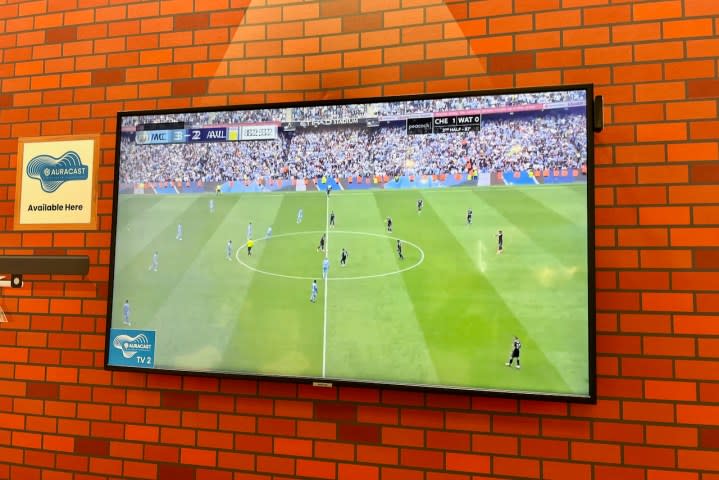
But it doesn’t stop there. The Bluetooth group sees the technology having wide-ranging applications, especially in public spaces. Picture going into a bar or airport lounge with several muted TVs on the walls, each playing a different sport, newscast, or TV show. In our CES demo, each TV was outfitted with an Auracast transmitter dongle (seen at the top right of the pictured TV, above), and all we had to was open the Auracast app on our phones, pick the marked TV we wanted, and then listen to the audio of the soccer match being played on it. As for the app, there was no timeline given for an official launch at the demo.
Auditoriums, theater venues, or even movie theaters can use the tech to allow visitors to use their own headphones, earbuds, or even hearing aids to better hear public speakers (say you’re way at the back), play dialogue, and even music performances. We were given a demo of an auditorium setup where users could choose from an English or Mandarin version.
Users will also be able to use Auracast to share the audio from their laptops or smartphones. In our CES demo, we could connect to “Dave’s Laptop” to share a movie, or “Lori’s Phone” for some music. Sound, of course, will vary depending on your headphones, but in my demo, the music and TV audio I heard sounded pretty good. Users can also set up passwords for access, and a Bluetooth SIG rep said that the distance of the broadcast can be set too — like if you want to keep it limited to just you and a nearby friend.
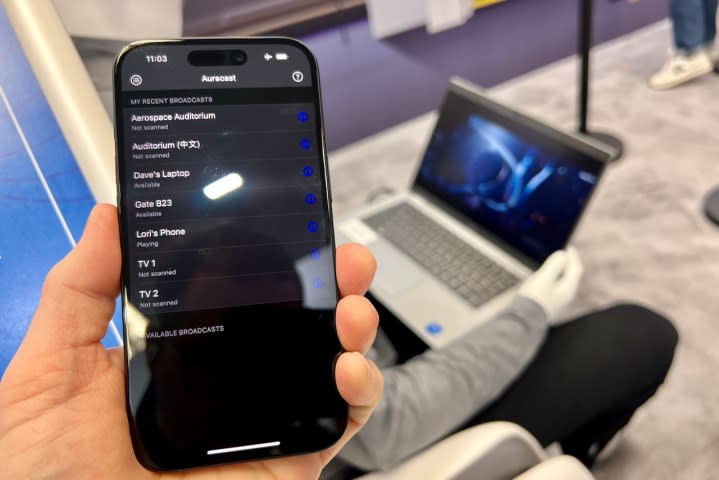
How does it work?
Auracast is a Bluetooth technology that works in a similar way to an FM radio broadcast. It can transmit a one-way signal at a range of up to 100 meters and to an unlimited number of devices. There’s no actual connection between the transmitting and receiving devices, so it can’t be used to control or access information on the devices.
While the tech has been around for a few years, we are now starting to see audio products such as headphones and speakers with Auracast support hit the market, such as JBL’s CES-announced lineup of speakers and some of EarFun’s new headphones. The folks at the Bluetooth group told me that their hope is that the tech will become standard in all kinds of devices, and eventually be accessible at the operating system level — Android and iOS devices, for example, could include it much like the Bluetooth and Wi-Fi menus on our smartphones.
But that doesn’t mean existing devices have to be left out. Transmitter hardware is also becoming available for personal and commercial use, with affordable dongles, adapters, and streamers hitting the market that can turn TVs, laptops, public address systems, and other devices into transmitters.
